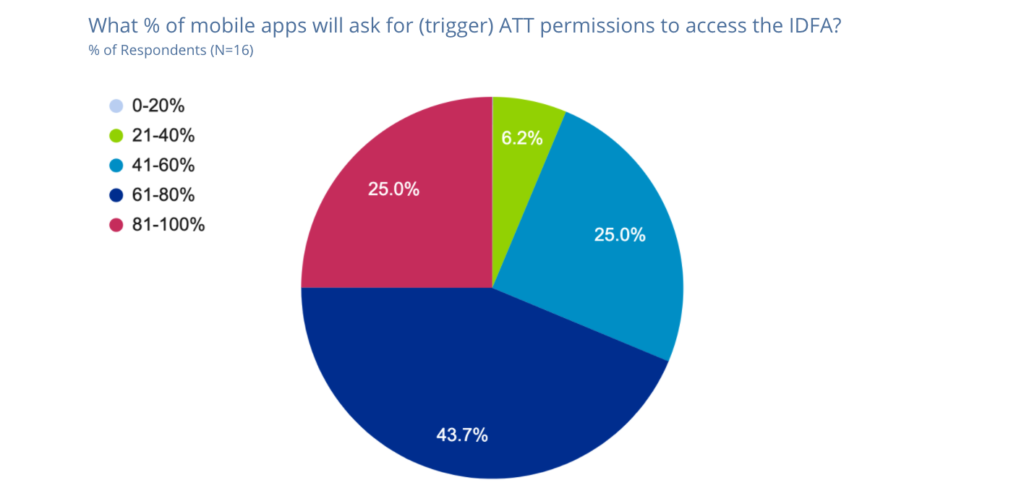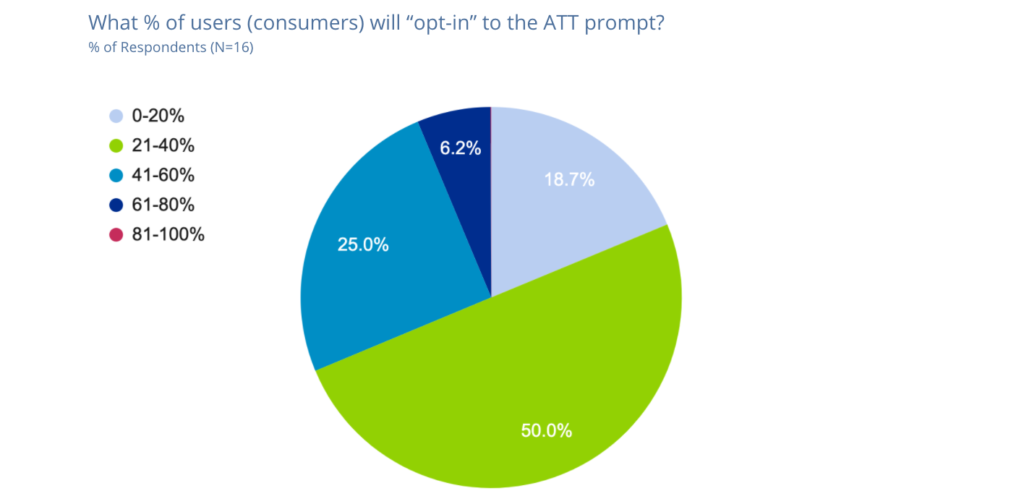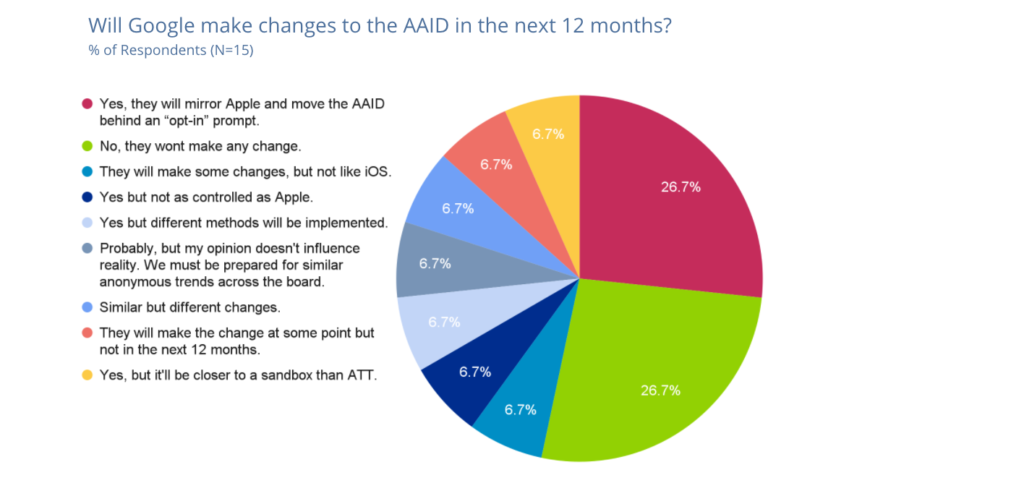The landscape of addressability and identity is changing quickly as vendors unveil new policies and AdTech companies, brands, and app publishers react to those policies by seeking workable solutions. Having polled attendees on the subject at our The Series event last October, we felt the time was right to check the pulse of the marketplace again during a recent industry roundtable, an industry conversation as part of The Series event.
The roundtable brought together a small group of industry leaders to discuss: efforts to build consensus in the post-IDFA world, what we’re learning for iOS 14.5 Beta 2, and the pros and cons of alternative addressability and identity solutions. We then polled the group, which included participants from data, identity, or measurement companies (the majority), agencies and publishers.
Ever since Apple announced in September that it would delay its iOS 14 tracking changes, the industry has tried to predict how much time it would have to prepare for the inevitable opt-in requirement. When we polled our attendees, the vast majority predicted the ATT opt-in feature would finally take effect by the end of this month.


With the release of iOS 14, users will be required to explicitly give permission in order to use the IDFA. That means that mobile app publishers will need to add an iOS ATT alert to their apps, asking users to allow access to and use of identifiers like IDFA. According to our poll respondents, a clear majority – between 61% and 100% – of mobile apps will add this feature. However, a sizable minority of those polled – one out of three – predicted that the percentage of mobile apps adding an iOS ATT alert would be lower than 61%.


When presented with that ATT prompt, how many users will choose to opt-in? According to our survey, not many. A clear majority of our industry experts felt that user opt-in would be below 41%, with nearly one-fifth of those polled predicting an opt-in rate of 20% or less.


When Apple moved to IDFAs, Google responded by implementing its own identifier, the Android Advertising ID (AAID). Now that Apple is moving its IDFA behind an opt-in prompt, will Google soon follow suit? Our panel of experts were divided on that question. The top two responses were tied at 26.7%: one group predicted Google would mirror Apple and move the AAID behind an opt-in prompt, while an equal number foresaw no change at all. The rest of our respondents – nearly half – were divided among a range of other options.


According to our research, there are at least 10 identity solutions competing to replace third-party cookies. We asked our poll participants to tell us which of those 10 was their primary choice so far. The response was quite stark. Two-thirds of respondents named The Trade Desk UID 2.0 as their number-one identity solution. Another third picked LiveRamp Identity Locker. None of the other identity solutions presented in the poll gained a single vote. The consensus is clear: The Trade Desk UID 2.0 is leading the way, with LiveRamp Identity Link staking its claim as a viable #2.


The near-term future of addressability and identity remains unclear, according to our select group of industry experts, but there are signs that the industry is cautiously finding its way forward. For more insights on addressability, be sure to check out our report from last quarter – and keep watching this space for further insights.



Subscribe For Updates